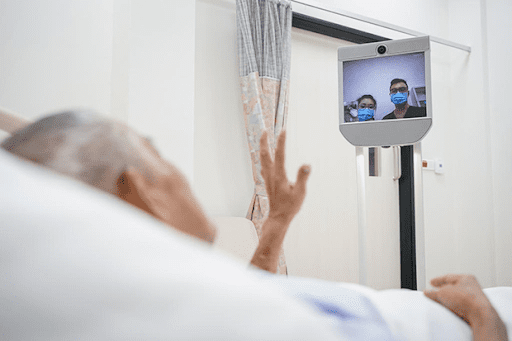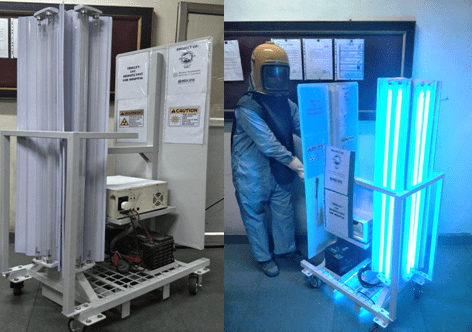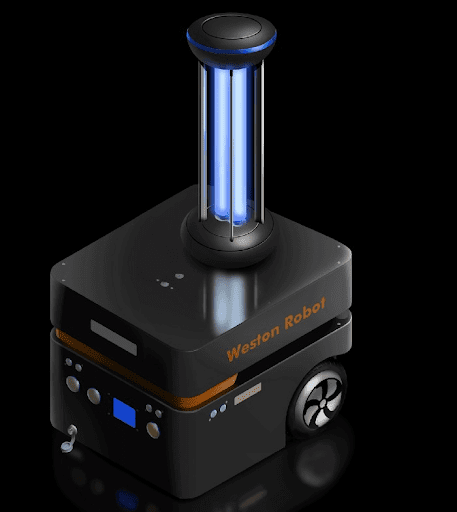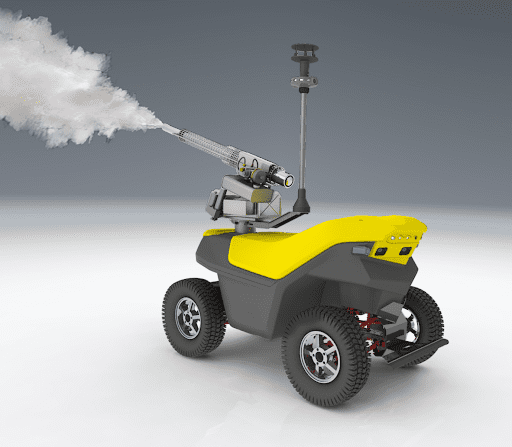- Abel David
- February 3, 2021
The Role of Autonomous Mobile Robots in a Post-pandemic World
The vision of Robots and Humans working together has been popularized by numerous Hollywood movies, comic books and the media for many decades now. Success stories about the application of automation in the manufacturing industry date back to the early 1980’s, when welding robots demonstrated efficiency and resilience to deliver on time and increased the overall supply. And ever since, robots have been used for a variety of applications such as painting, assembly, disassembly, pick and place for printed circuit boards, material handling, product inspection, and testing, all accomplished with high speed and precision.
In the past few years, however, the world is seeing a significant shift towards AI-enabled robots that are changing the game by bringing various levels of autonomy into the picture. If we consider the example of the labor-intensive task of warehouse piece picking, AI-enabled robots are learning to handle millions of objects with minimum help from humans. What once required individual item registration and programming of robots, can now be accomplished with self-directing or autonomous robots using deep learning algorithms. This in turn, is helping industries cut costs and improve profits in the long run.
Further, with the dawn of COVID-19, the way we patronize restaurants and shops and see our doctors has changed drastically. From collaborative robots (co-robots) to robots with high levels of autonomy, the trend continues towards the application of Autonomous Mobile Robots (AMR) in every industry and retail setting; more so as societies are restructuring places of work and pleasure to minimize human contact. The accelerated adoption of AMRs is being seen in many frontline roles from spraying disinfectants to delivering & serving food to customers, in outdoor and indoor urban hotspots. A key advantage of using AMRs is that they are able to reliably do these repetitive physical tasks when many workers aren’t safely able to or willing to set foot in these areas.
As AMRs are becoming more and more competent, a few popular ones that are gaining traction during this pandemic are discussed below.
TELEPRESENCE ROBOT
Telepresence Robots or Virtual Assistance Robots, now more than ever, are revolutionizing the way we work or learn remotely. They enable telecommuters, doctors, remote workers, and students to feel more connected to their colleagues by giving them a physical presence where they can’t be in person.

Image Credit: Using robots to enable patients to be inspected remotely
In recent times, Telepresence robots are being put to use to enable interactions with COVID-19 patients in isolation wards. These semi-autonomous robots could be teleoperated over the Wi-Fi, to visit the patients and provide a live video link to their loved ones or to deliver their food and medication.
DISINFECTANT ROBOT
In the post pandemic world, disinfecting shared public places has been a tricky problem to solve. A non-intrusive solution widely adopted in recent times is UV-C light, but due to its adverse effects on human skin, trolleying it would look somewhat like the image below.

Image credit: UV-C based disinfection trolley by rapid cleaning of hospital environment, helping in the fight against COVID-19
Enter AMR, mounted with a UV-C lamp as a payload, which would traverse autonomously in a designated area.

Image Credit: Weston Robot
This is accomplished by using the mobile app where the user creates a map of the area and chooses the waypoints for the robot to traverse. The robot then follows the waypoints and stops at each waypoint, till the disinfection job is done. Also, it returns to the charging station once the battery is below a threshold eliminating the need for human intervention. A swarm of these robots could be used in and around the areas where the most interactions occur such as hospitals, railway stations, airports, etc.
An intrusive solution would be to air-blast disinfectant liquids similar to the ones used in agricultural spraying, to increase the chlorine content in the air and reduce the possibility of aerosol transmission.

Image Credit: Robots deployed to disinfect open spaces
This fully autonomous solution is basically an AMR, mounted with a sprayer mechanism, which can navigate to the decontamination area using pre-built maps giving the technical staff less exposure to these highly concentrated chemicals while working in an entirely safe and risk-free environment. The range of its spray devices can reach up-to 30 feet.
LAST-MILE DELIVERY ROBOTS
As door delivery businesses saw a huge increase in demand during the pandemic, Last-Mile delivery robots found application as a reliable and safe contactless delivery system. These robots are an alternative to human food delivery drivers from companies like Uber Eats and DoorDash, which perform tasks that a person cannot do safely.
These companies have created and deployed cool new robots with the intelligence to navigate city streets to deliver orders from selected restaurants to the customer location using a mobile app, while avoiding dynamic obstacles like pedestrians.

Image Credit: Autonomous delivery robot
The robot’s body is equipped with a storage bin with a locking compartment where the restaurant stores the delivery package and the bin only unlocks upon authentication by the customer at her location during delivery. Typically, these robots are equipped with cameras and computer vision driven by machine learning. They can detect and classify what they see, and tell the difference between a car, a person, or a wall.
While these robots are definitely cool tech; procuring, running and maintaining fleets of robots can be prohibitively expensive. To circumvent this, the solution that small restaurant owners are turning to is the clever ‘Robot-as-a-Service’(RaaS) business model for food delivery, which is becoming more crucial as Covid-19 reshapes the gig economy.
ROBOT AS A SERVICE
Many are now familiar with the concept of Software as a Service (SaaS) or Big Data as a Service (BDaaS) or Platform as a Service (PaaS) where the intent is to democratize technology while lowering the barrier to entry for businesses, large and small alike.
One of the new areas, this philosophy is becoming more prevalent, is “Robot as a Service” (RaaS), a cloud-based “robotic rental” solution used for both B2B or B2C businesses.
RaaS takes the capabilities of robotics and removes the upfront cost of robot installation with large amounts of computing power, utilities, and knowledge. And so, small- and medium-sized businesses are increasingly experimenting with RaaS because of its flexibility, scalability, and lower cost of entry compared to traditional robotics programs.
For example, finding sufficient numbers of workers in a warehouse, for online retailers during seasonal surges is quite the challenge. With the RaaS model, these seasonal labor shortcomings can be mitigated without investing in equipment that won’t be used in slower periods while still being able to quickly scale up to meet the high demand.
RaaS might be the answer for businesses, trying to figure out how to improve productivity or reduce risk, but always thought, robots were out of their price range.
ROBOTICS AT IGNITARIUM
Robotics and in particular Autonomous Mobile Robots is an area where Ignitarium has been developing technology solutions for the warehouse use cases. Robotics as a theme started as a R&D thread to leverage the existing skills in computer vision and AI/ML. In the past year, we have demonstrated various use cases on sensor fusion, integration of Lidars & Radars, visual odometry using RGB-D Cameras, path planning, obstacle avoidance, integrating with deep learning modules for object Classification / Detection / Tracking. Our vision is to create a software package which is hardware agnostic, for use across hardware platforms with minimal customization.

CONCLUSION
The COVID-19 pandemic has accelerated the adoption of Autonomous Mobile Robots (AMRs) such as Telepresence, Disinfectant, Last-mile delivery robots. Roboticists are also seeing adaptation of AMRs to new niches and are exploring new avenues. Although the robotics wave is changing the way services and products are sold, there are still challenges to overcome like the amount of customization required, both in hardware and software for the robots to adapt to customer specific needs. Regardless of the hurdles, RaaS will be the inevitable solution many organizations seek either with hardware & software or software-only flavors.

































Comments are closed.